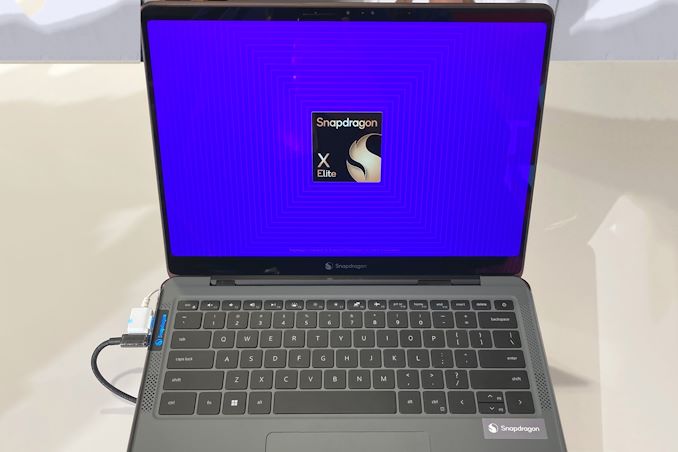Last week marked the introduction of Qualcomm’s new Snapdragon X Elite, their first laptop SoC design since acquiring Nuvia. This new chip, featuring Qualcomm’s custom Arm CPU core, Oryon, is set to make a significant impact on the laptop SoC market. With a focus on engineering and marketing resources, Qualcomm aims to dominate the Windows laptop market while paving the way for even more powerful smartphone SoCs in the future.
During the Snapdragon Summit, Qualcomm showcased the Snapdragon X Elite and its impressive benchmark scores. Outperforming top chips from Intel, AMD, and Arm, Qualcomm is confident in the capabilities of the Snapdragon X Elite. Although retail devices won’t be available until mid-2024, Qualcomm organized an embargoed event for press and analysts to give them a closer look at the performance of the Snapdragon X Elite. The purpose of this event was to demonstrate that the benchmark scores shared by Qualcomm were not exaggerated and to build anticipation for the upcoming release.
However, it’s important to note that these benchmark numbers are provided by Qualcomm and not verified by independent sources. As part of the promotional strategy, Qualcomm strategically chose standardized benchmarks to ensure fair comparisons with rival chips. Additionally, the benchmarking session allowed Qualcomm to control the narrative around the Snapdragon X Elite and create excitement within the tech community.
Timing plays a crucial role in Qualcomm’s strategy, as they want to generate buzz around the Snapdragon X Elite as quickly as possible. By revealing their SoC early, Qualcomm can gauge the competition and secure partnerships with OEMs in preparation for the launch. The previous generations of Qualcomm’s laptop chips did not gain much traction, so the company is determined to reverse this trend and ensure a successful launch for the Snapdragon X Elite.
During the benchmark demonstration, Qualcomm showcased two reference design laptops: “demo config A” and “demo config B”. These laptops resemble DTR-style and thin & light laptops, similar to Apple’s MacBook Pro designs. Although these specific designs won’t be available for sale, they serve as a representation of what OEMs can achieve with the Snapdragon X Elite. Qualcomm frequently employs this method of showcasing their hardware through reference devices to provide early insights into their designs.
The two laptops differ in size and performance characteristics, with the high-performance system (A) sporting a Snapdragon X Elite chip with a maximum clock speed of 4.3GHz for 2 core turbo and 3.8GHz for all-core turbo. The thin and light system (B) operates at lower clock speeds of 4.0GHz and 3.4GHz, respectively. Both laptops use active cooling systems and feature LPDDR5X memory running at impressive data rates of 8533Mbps/pin, providing a significant memory bandwidth advantage.
In summary, Qualcomm’s Snapdragon X Elite is set to revolutionize the laptop SoC market. With its custom CPU core and impressive benchmark scores, Qualcomm aims to establish its presence in the Windows laptop market and pave the way for future smartphone SoCs. The strategic timing of their benchmark disclosure allows Qualcomm to generate interest and secure partnerships in preparation for the upcoming release. By showcasing reference design laptops, Qualcomm gives OEMs a glimpse into the potential of the Snapdragon X Elite and aims to reverse the lackluster adoption of their previous generations of laptop chips.


